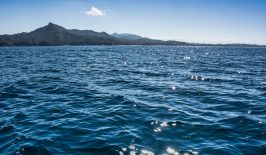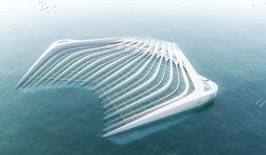According to the United Nations’ International Maritime Organization, the global shipping industry generates around one billion tons of carbon a year, equating to around two to three percent of global totals. Whats more, the world’s fleets of trading vessels, many of which use cheap, dirty ‘bunker’ fuel for propulsion, are not subject to international treaties on climate change – such as the Paris Agreements – due to the international nature of the sector.
This means generating change in global shipping, which forms the backbone of world trade, has always faced major challenges, especially when you’re dealing with vast, powerful logistics corporations who can often hold sway in national governments.
However, change might be on the horizon. Several maritime technological developers have begun looking to the past to solve the problems of the future, namely by bringing back wind power to the oceans.
Sailing Ahead?
One such company, Norsepower, has taken the lead in retrofitting large ships with high-tech sails. The Norwegian company, founded in 2012, has designed a rotor sail which it claims can reduce a ship’s fuel requirements by as much as twenty per cent, saving money and the environment in the process.
In reality, the idea behind Norsepower’s modern sail isn’t all that new, with the concept first tested in the 1920s by Finnish inventor Sigurd Savonius and German engineer Anton Flettner. The rotor sail operates via the Magnus effect, in which wind imparts spin on cylinders and spheres via the difference in air pressure on either side of the object – the same scientific principle behind imparting spin on a golf or football.
The Norsepower rotor sails, which vary in height between 14 and 30 metres, are installed on the decks of ships and connected to the ship’s electrical systems. When the sails encounter wind resistance, they generate electricity, allowing the captain to throttle back on the traditional engines, saving fuel without sacrificing speed.
Naturally, the Norsepower rotor sail comes with a whole host of advantages over traditional sails. Firstly, they require very little attention from the crew, and don’t come with the web of rigging, guidelines and booms common with sails. This means the captain can turn on the sails with the press of a button, while the sail’s own automatic control system can ensure its output is optimized. Secondly, the rotor sail is much more efficient than a traditional sail, with the cylinder design providing up to ten times more thrust with a much smaller surface area.
Norsepower has already installed sails on three large vessels including, most recently, the Maersk tanker Pelican. Of course, the sails do not yet currently provide enough power to single-handedly power a large vessel, but their ability to reduce fuel expenditure could be an important step in reducing the global shipping industry’s appetite for crude, dirty fuel.
The shipping industry has traditionally been somewhat inert in its response to global climate change. Despite this, the IMO hopes to halve the carbon produced by shipping by 2050. Some companies have gone even further, with shipping giant A.P. Moller-Maersk wanting to become carbon neutral in as many years.
Hopefully, if cleaner technologies can save these larger corporations money – and they help save the environment in the process – it might be enough to spur on major change in the sector. Perhaps, the grand Age of Sail is due to make a comeback?







